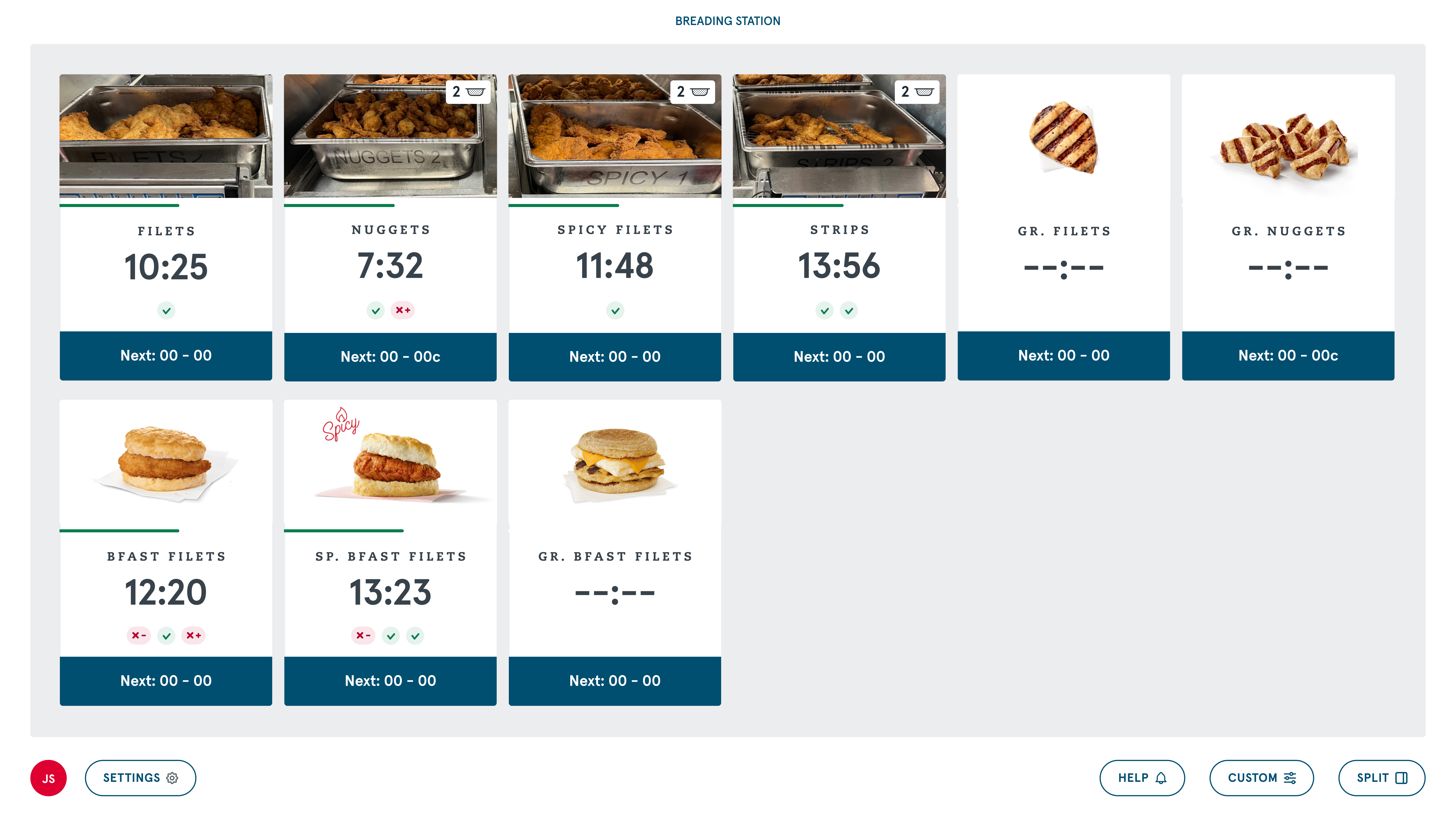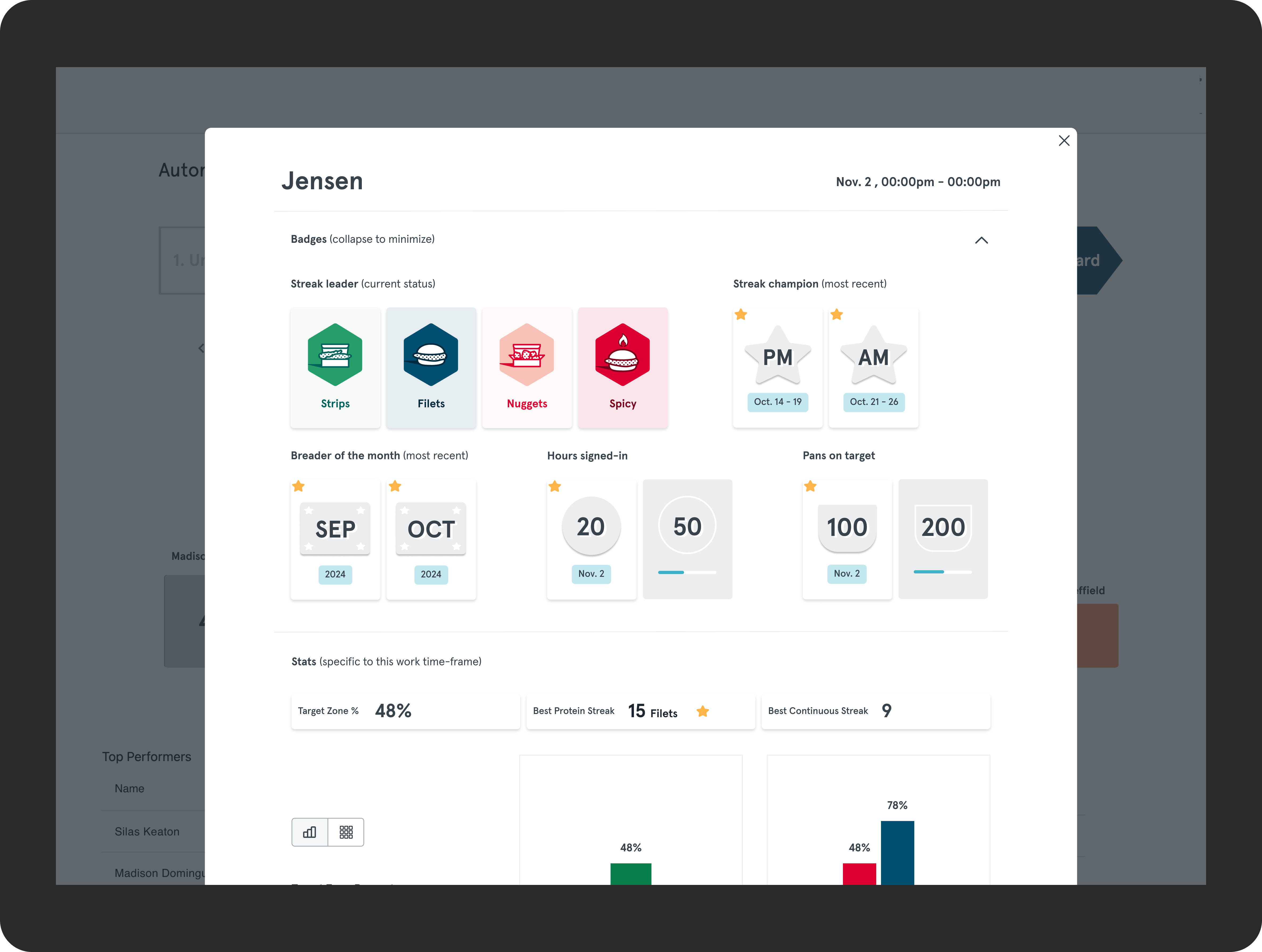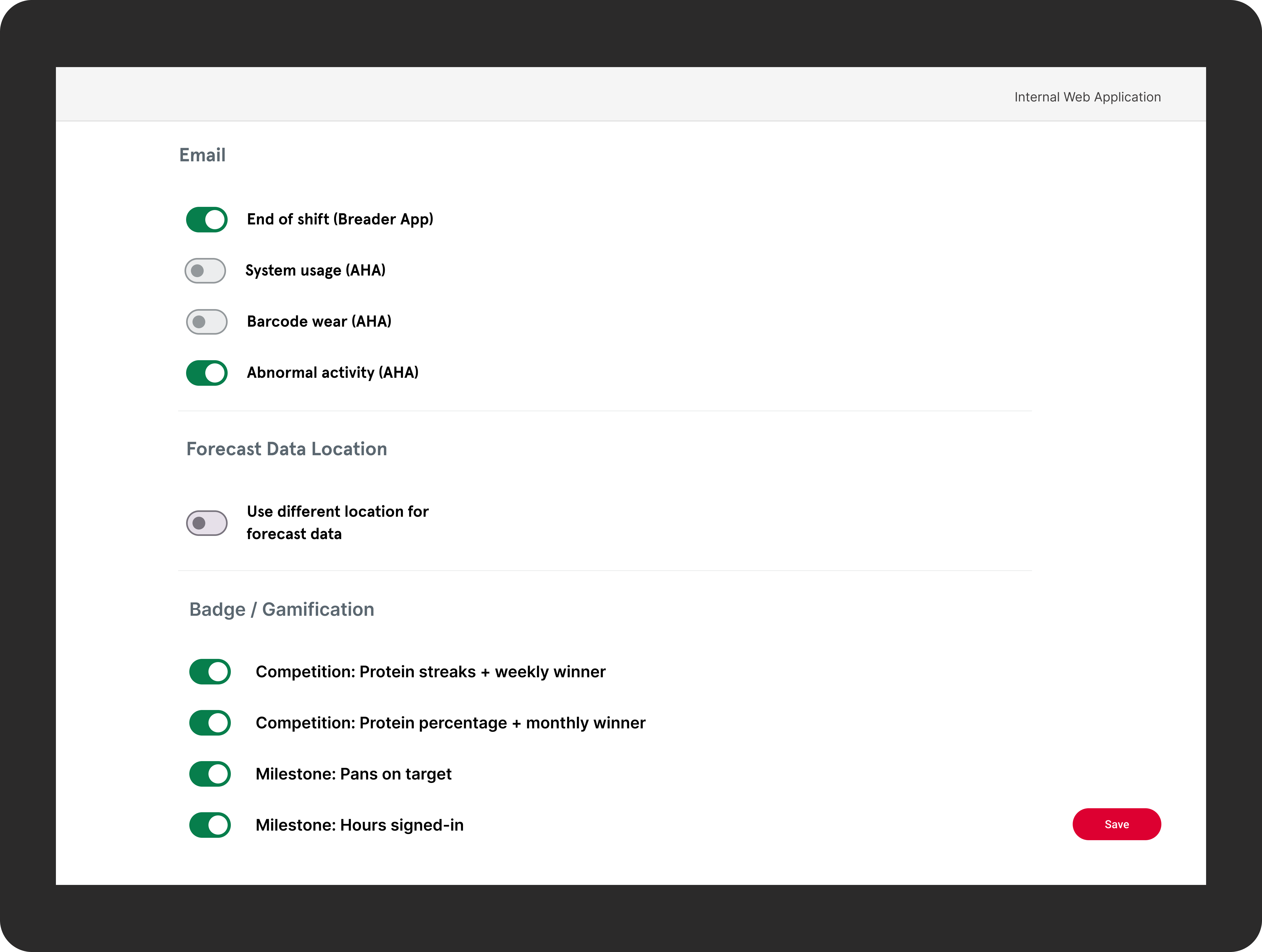As Senior UX/UI Designer (Lead) for Stratfield Consulting, I led the UX transformation of kitchen operations at Chick-fil-A, a Fortune 500 QSR brand. My mission: to re-engineer frontline digital tools to increase efficiency, reduce training burden, elevate accessibility, and improve consistency across thousands of restaurants. Working remotely yet deeply embedded, I designed interfaces for 250,000+ team members across 2,500+ locations — driving a 30% improvement in production speed and halving training time.
.png)
Objective: Ground the redesign in the lived experience of operators, kitchen leads, and team members.
- Conducted field research across multiple restaurant locations, observing workflows in high-volume kitchen environments, interviewing team members and leads, and gathering quantitative data on operations, error rates, and training throughput.
- Identified key pain points: long training sessions, inconsistent interface usage across locations, error-prone tasks in busy meal-periods due to unreliable data, fragmented systems lacking cultural accessibility accommodations.
- Mapped personas (e.g., “New Team Member”, “Kitchen Lead”, “Operator”) and journey maps that illuminated critical touch points where digital tools either helped or hindered workflow.
- Identified opportunity to design interfaces that are built for speed, accessible for all abilities, and consistent across location scale – enabling and assisting team members to focus on cooking efficiently rather than fighting the interface or worse – turning it off.
Goal: Align UX design with Chick-fil-A’s operational strategy and brand promise of excellence, while uplifting the digital tools used by team members.
- Facilitated cross-functional workshops with 13 business leaders including operations, training, technology, and UX stakeholders to define key user experiences.
- Defined a north-star vision: “Empower every team member to deliver exceptional service quickly, confidently, and inclusively.”
- Established experience principles: “Speed through simplicity”, “Accessible for all hands”, “Consistency at scale”.
- Mapped the digital ecosystem (kitchen workstations, training modules, dashboards) to ensure that new designs aligned with broader operational goals and could scale across thousands of locations.
Strategic Shift: Move from legacy, fragmented kitchen tools toward a unified, accessible, and modular UX platform.
- Introduced a modular design system tailored for high-volume kitchen settings — with components optimized for quick readability, large tap targets, and accessible color/contrast standards.
- Built the design operations process to support distributed rollout across locations, enabling prioritized feature releases, training-friendly modules, and accessible UI standards.
- Ensured WCAG-compliant design patterns so the tools would be inclusive for all team members.
- Leveraged agile sprints to rapidly prototype and test solutions, iteratively refining the experience based on team member feedback and operational data.
Challenge: Kitchen team members faced multiple legacy systems, inconsistent interfaces, non-reliable data, high error rates, and long training times — especially during peak service.
Solution Summary: Designed a suite of tools including a breading station interface, real-time performance dashboard, and gamified training modules — each optimized for speed, clarity, and inclusiveness.
- Developed a touchscreen interface replacing legacy tablets, with large, high-contrast text, simplified workflow controls, and real-time pan-count range displays.
- Re-architected information hierarchy to display data-driven mandatory breading station information for every restaurant and created the ability for restaurants to split the screen with potentially helpful non-mandatory station information — reducing confusion and enabling faster decisions.
- Addressed accessibility: refined color-coding (avoiding conflicting red/green reliance), adding iconography for color-blind users.
- Enabled site-level customization: options to set number of pans, proteins, batch vs made-to-order mode, adjusting to restaurant-specific needs.
- Outcome: errors reduced by 40% (per stakeholder report); quality consistency improved by 25%.


.png)
- Introduced a badge system and competition elements to increase engagement in training modules and everyday workflow. Over 50 badge ideas were refined into three groups: Milestone, Competition (real-time), Performance (streaks).
- Rolled out web app dashboards for team leads to monitor performance, training completion, error rates, and badge achievement — enabling real-time coaching and visibility.
- As a result, training time decreased by 50% and production speed increased by 30%.


.png)

— Production speed improved by 30% across participating locations.
— Training time decreased by approximately 50%.
— Accessible interfaces rolled out to 250,000+ team members across 2,500+ restaurant locations.
— Error rates in key tasks (e.g., breading station operations) dropped significantly; quality consistency improved by 40%.
— Design became a strategic partner in operational transformation, not just a front-end interface function.
— A unified design system and operations process improved delivery velocity and reduced redundancy across kitchens and modules.
— Empowered team members with faster, clearer, and more inclusive tools — contributing to the brand’s service excellence promise.
— In high-volume operational contexts (like QSR kitchens), design must prioritize speed, readability, and inclusivity — features that might differ from consumer-facing product priorities.
— Modular design systems are critical for scalability across thousands of locations: flexible enough for local needs, but consistent enough to maintain brand and UX integrity.
— Engaging users (team members, leads, and operators) early and consistently in design helps identify hidden workflow bottlenecks and builds adoption momentum.
— Accessibility is not a “nice to have” in high-volume environments — it contributes directly to efficiency, error reduction, and team member satisfaction.
Through strategic UX leadership at Chick-fil-A, I transformed fragmented, legacy kitchen tools into a unified, efficient, and inclusive digital platform for team members. By combining research-driven design, scalable systems thinking, and cross-functional alignment, we achieved measurable improvements in speed, training time, error rates, and workforce accessibility — delivering meaningful impact at scale.